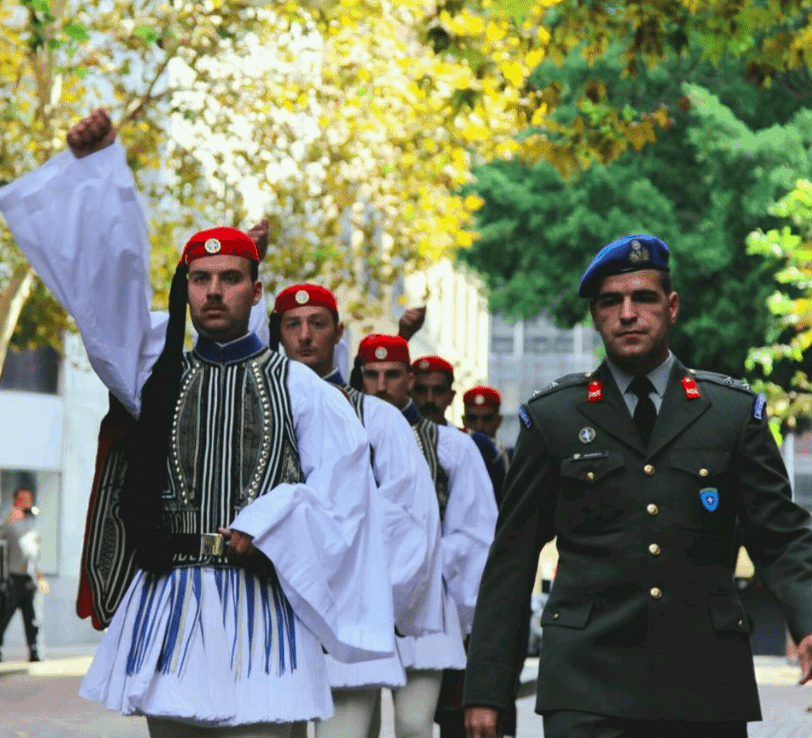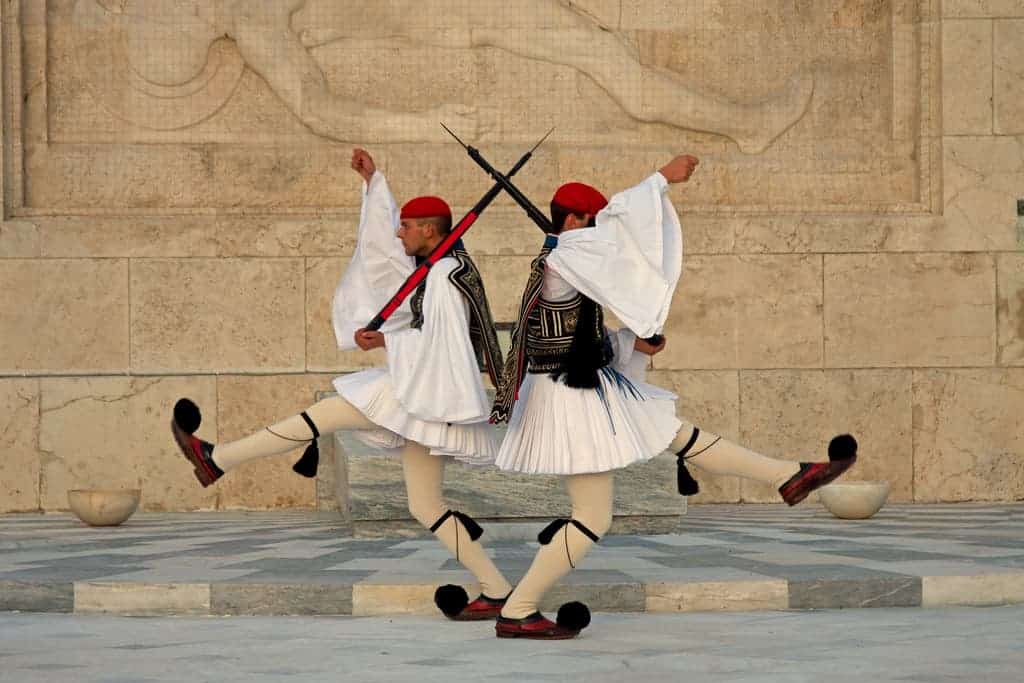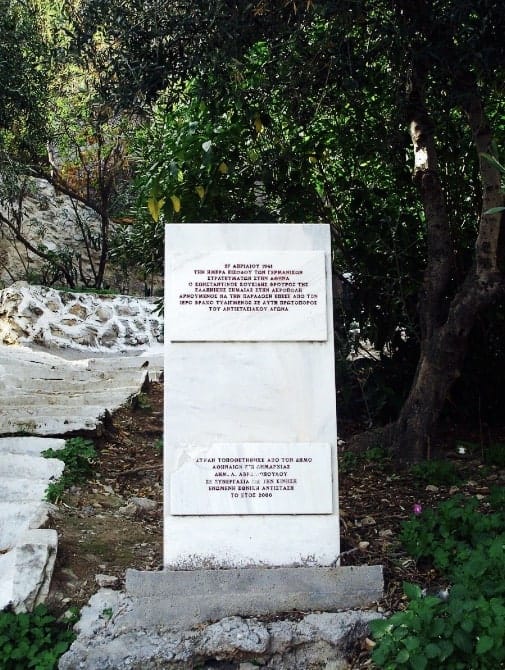From Homer’s epic poems to the Byzantine Empire’s final moments and from the Greek War of Independence to the modern Hellenic Republic- the Evzones- the elite light infantry of the Greek Army have always stood in history’s first line.

With their origins lost in the labyrinth of the nation’s ancient tradition, the Presidential Guard as we know it today was founded on December 12 1868, during the first decades of the Greek independent state. As a combatant and ceremonial force, among other duties, the Evzones was tasked with King Otto’s safety.
During the centuries that followed the fall of Constantinople and the Byzantine Empire in 1453 up until the 1821 Revolution outbreak, the skirt-clad Evzones was renamed by Greece’s rural population to "tsoliades" (coming from the Greek word for rags) due to their appearance.

The unit’s uniform, as we know it today, was worn by men at arms, klephts and anti-Ottoman insurgents during the Turkish occupation of Greece. The Evzones, with the "foustanella" kilt and the rustic shoes with pompoms, called "tsarouhi" became the symbol of the War of Independence. After the Revolution of 1821, their uniform was established as one of all chieftains and fighters of the Revolution.

Since the first official Evzone, light battalions were formed within the Greek Army and they engaged in every war the country has participated in until the Second World War. In particular, the Evzones have fought the catastrophic Greco-Turkish War of 1897, the victorious First and Second Balkan Wars of 1912 – 1913, the following First World War, the Greco-Turkish War of 1919 – 1922 and finally the Second World War, until the front line collapse and the capitulation on April 20, 1941.

After the Second World War the Evzone regiments were reorganized and formed into modern infantry units as part of the general reconstruction and modernisation of the country’s armed forces and only one battalion, composed of three companies, was kept in its original form, stationed in ”Georgios Tzavelas” barracks on Athens central Herodou Attikou street, behind the Parliament building and meters away from the Presidential Palace.
The contemporary duties of the Evzones include the 24-hour guarding of the Tomb of the Unknown Soldier in downtown Athens, as well as the guarding of the Presidential Palace, the ceremonial raising and lowering of the Greek flag every Sunday at the Acropolis, presenting arms and welcoming foreign leaders, accompanying the President of the Hellenic Republic on official visits abroad, annual participation on March 25th military parade in Athens and October 28th military parade in Thessaloniki.

The Evzone Traditional Uniform
The conscripts chosen meticulously to become Evzones must have a height of no less than 1.87 meters and an excellent physique, which can be tested during the long and strenuous training that can last several months. Their notorious training involves the development of the ability to stand still for an entire hour and the perfecting of their trademark synchronised ceremonial gait when changing guards. In order to protect the Evzones’ blood circulation following the motionless 60 minutes, the ceremonial steps are carried out in slow motion.
The elite unit of the Evzones uniform has a history of some 2.800 years originating from the warriors at the time of Homer and culminating in the guerrillas at the time of the Turkish occupation. They are all handmade by specialised artificers, as even the making of them is a complicated procedure. There are two versions of the Evzone uniform; that of the officer and that of the private. Each has a summer and a winter version. The completion of each of them can take up to 80 days and more than 30 meters of white cloth.

The main parts of the Evzone uniform include a hat made of red baize with a silk tassel, a white shirt with wide sleeves, a hand-embroidered waistcoat, a kilt (the foustanella) made from 30 meters of white cloth with 400 pleats each of them representing the 400 years of the Turkish occupation, breeches (long red trousers for the officers and white woollen stockings for the conscripts), a cartridge belt and two garters (blue for the officers and black for the conscripts). Each pair of traditional shoes (tsarouhia) weighs some 3.5 kilos. The shoes are also completely handmade from hard red leather and each sole has 60 nails, while the toe of the shoe turns up at a point that is covered by a black pompom. Apart from the above, the uniform also consists of the gaiters, the red boots and the 1821 sabre of the officers, the inside garter holding the stockings in position and the fringe.
In addition to the common Evzone uniform, the unit’s members also wear the Cretan uniform with its characteristic breeches and knife worn in the belt as well as the traditional uniform of Pontus, which has been added lately. Those two uniforms are used on special occasions, commemorating events related to either the history of Crete or Pontus.

Konstantinos Koukidis: The legendary Evzone who refused to surrender the Greek flag to Nazis
On Sunday, April 27th 1941, when the first German regiments reached the outskirts of Athens, the young Evzone Konstantinos Koukidis was on flag guard duty at the Acropolis. When the first Nazi officers and soldiers climbed the sacred hill he was ordered to surrender and hand them over the Greek flag and replace it with the swastika. The heroic Evzone conscript instead refused to obey the occupation army officers’ orders and after hauling down the flag and wrapping it around his body, jumped from the Acropolis hill to his death. Koukidis’ tale, which was first published in the British Daily Mail, inspired Athenians to follow his example and disobey the invaders’ orders and fight for freedom. Some 60 years after his sacrifice, on April 2000, a commemoration plaque was placed in the spot where it is believed Koukidis died, in memory of him.
By Aggelos Skordas

